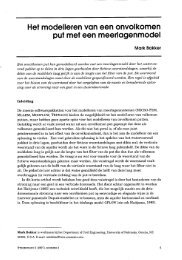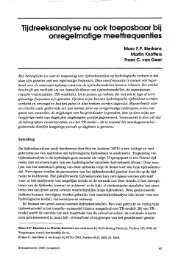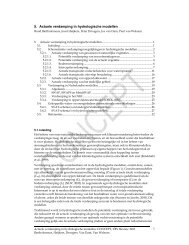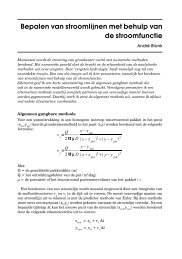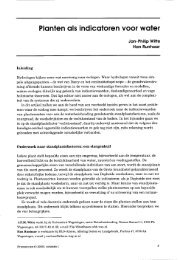PDF Viewing archiving 300 dpi - NHV.nu
PDF Viewing archiving 300 dpi - NHV.nu
PDF Viewing archiving 300 dpi - NHV.nu
You also want an ePaper? Increase the reach of your titles
YUMPU automatically turns print PDFs into web optimized ePapers that Google loves.
Now another difficulty remains in that the question should be answered: how do such<br />
large particles originate in a cloud In the first place this may be due t when ,$<br />
id'<br />
there is more or less strong turbulence in the cloud. However, as a rule this process leads<br />
to no more than the relatively small droplets that occur in a drizzle.<br />
To come to real precipitation, i.e. real rain or real snow, nature has two important<br />
processes at its disposal. It has already been mentioned that condensation <strong>nu</strong>clei of differ- '"<br />
s t dimensions can be present in the atmosphere and that the larger condensation <strong>nu</strong>clei<br />
generally lead to the occurrence of larger drops. Here one finds a first possibility for large<br />
particles to be originated in a cloud. These large particles fall, with regard to the smaller<br />
ones, coagulation takes place and precipitation drops are formed. This process mainly<br />
el<br />
0 "C -T<br />
2. Water vapour pressure as a function of temperature.<br />
e = vapour pressure;<br />
E = maximum vapour pressure for temperatures above freezing-point;<br />
E, = maximum vapour pressure for vapour in contact with supercooled water;<br />
Ei = maximum vapour pressure for vapour in contact with ice;<br />
T = temperature.





